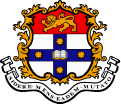
|
University of Sydney
School of Mathematics and Statistics
Applied Mathematics Seminar
Dr Barrie Fraser
University of Sydney
Whirling Strings and Spinning Yarns
Wednesday, September 12th, 2-3pm, Carslaw 275.The first studies of whirling string systems (in a vacuum) were made by D. Bernoulli (1700--1782) and L. Euler (1707--1783) who showed that as the speed of rotation of a vertically hanging heavy cable was increased it would fly away from the vertical configuration at certain critical speeds determined by a linear eigen-value problem. There the matter rested until 1955 when Kolodner established the existence of solutions to the nonlinear equations between the critical rotation speeds, and sketched the first bifurcation diagram for this system. Next, Caughey (1958) studied the heavy cable the top end of which is towed in a circle. Since then a huge literature has grown.
There is also interest in the practical application of these theories to circularly towed cable mass systems, and also to a number of applications in the textile yarn spinning industry. In these problems the effect of aerodynamic drag on the cable or yarn proves to be significant and this results in a rich bifurcation behaviour of the system solutions. Furthermore, the theory accurately predicts the behaviour of the corresponding physical systems.
In this talk I shall focus upon the application of the theory to the widely used ring-spinning process for inserting twist into wool, cotton and and other textile yarns made from staple fibres.
If time permits I shall also discuss the results obtained from the elegant experimental system devised by Chris Rahn to validate the aerodynamic drag model used in the analysis.